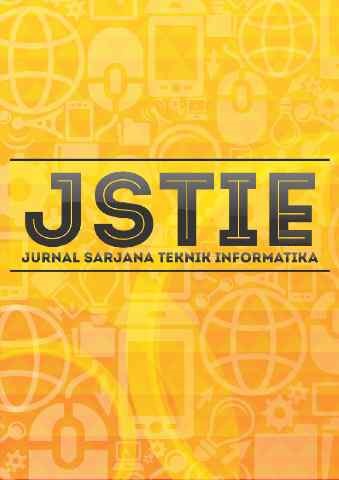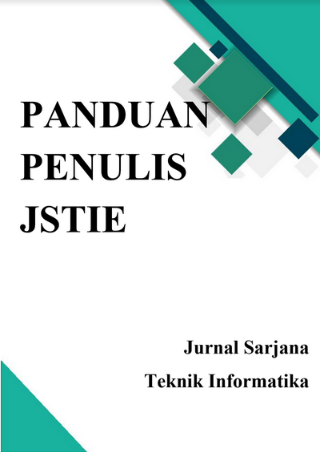Metode Z-Score untuk Menentukan Status Gizi Balita: Aplikasi Berbasis Android
DOI:
https://doi.org/10.12928/jstie.v10i3.24566Keywords:
Malnutrisi, Gizi, Z-Score, AndroidAbstract
Malnutrisi adalah masalah umum pada pasien anak dengan penyakit kronis, dan bayi berada pada peningkatan risiko karena percepatan pertumbuhan dan perkembangan otak. Sekitar 45% dari semua kematian anak secara globa disebabkan oleh Malnutrisi anak (kurang gizi) dan diseluruh dunia sekitar 20 juta anak dibawah usia 5 tahun terdeteksi kekurangan gizi parah, membuat mereka sangat rentan terhadap penyakit dan kematian dini. Penelitian ini bertujuan untuk mengembangkan aplikasi prediksi gizi agar para orang tua dapat dengan mudah memeriksa status gizi anak. Penelitian ini menggunakan metode penelitian waterfall dalam mengembangkan aplikasi. Hasil penelitian menunjukkan bahwa rata-rata 88% pengguna memahami informasi dari aplikasi sehingga aplikasi dapat digunakan untuk penggunanya.References
D. W. Schanzenbach and B. Thorn, “Supporting development through child nutrition,” Futur. Child., vol. 30, no. 2, pp. 115–142, 2020.
A. Efianingrum, “Pengembangan Iptek Berbasis Budaya,” J. Majelis, vol. 7, 2020.
J. E. Obbagy et al., “Complementary feeding and bone health: a systematic review,” Am. J. Clin. Nutr., vol. 109, no. Supplement_1, pp. 872S--878S, Mar. 2019, doi: 10.1093/ajcn/nqy227.
S. Rodríguez-Manchón, C. Pedrón-Giner, E. Cañedo-Villarroya, R. A. Muñoz-Codoceo, and Á. Hernández-Martín, “Malnutrition in children with ichthyosis: Recommendations for monitoring from a multidisciplinary clinic experience,” J. Am. Acad. Dermatol., vol. 85, no. 1, pp. 144–151, 2021, doi: 10.1016/j.jaad.2020.06.064.
M. Merita, F. Chandra, and G. Nurbintang, “Upaya Peningkatkan Pengetahuan Tentang Pola Asuh Gizi Balita di Desa Pulau Melako,” E-Dimas J. Pengabdi. Kpd. Masy., vol. 12, no. 1, pp. 173–177, Mar. 2021, doi: 10.26877/e-dimas.v12i1.5894.
S. Nurhayati and R. Lubis, “E-monitoring the vulnerability of malnutrition of children using the TOPSIS method,” J. Eng. Sci. Technol., vol. 16, no. 1, pp. 728–736, 2021.
S. L. Ginting, Y. R. Ginting, and W. Aditama, “Augmented Reality sebagai Media Pembelajaran Stimulasi Bayi Menggunakan Metode Marker Berbasis Android,” J. Manaj. Inform., vol. 1, no. 13, pp. 1–14, 2017.
A. Rosita, “Peran Taman Penitipan Anak Terhadap Kesehatan Dan Gizi Anak Di Taman Penitipan Anak Al-Baitul Amien Kabupaten Jember.”
D. V Runco, J. R. Stanek, N. D. Yeager, and J. A. Belsky, “Malnutrition identification and management variability: An administrative database study of children with solid tumors,” J. Parenter. Enter. Nutr., Feb. 2022, doi: 10.1002/jpen.2329.
M. V Capanzana, D. V Aguila, G. M. P. Gironella, and K. V Montecillo, “Nutritional status of children ages 0–5 and 5–10 years old in households headed by fisherfolks in the Philippines,” Arch. Public Heal., vol. 76, no. 1, p. 24, Dec. 2018, doi: 10.1186/s13690-018-0267-3.
M. M. Yousan, R. Latuconsina, and A. S. R. Ansori, “Aplikasi Penentuan Gizi Anak Laki-Laki Sesuai Dengan Standar Who (world Health Organization) Menggunakan Metode Z-score,” eProceedings Eng., vol. 7, no. 1, 2020.
R. T. Mardiyanto, N. L. A, and A. A. Putri, “Peningkatan Pengetahuan Gizi Seimbang sebagai Pedoman Hidup Sehat pada Masyarakat di Sekitar Kelurahan Pondok Jagung Kecamatan Serpong Utara Kota Tangerang Selatan,” Pros. Semin. Nas. Pengabdi. Masy. LPPM UMJ, no. September, pp. 1–5, 2019, [Online]. Available: http://jurnal.umj.ac.id/index.php/semnaskat.
H. Humaryanto and A. Syauqy, “Gambaran Indeks Massa Tubuh dan Densitas Massa Tulang sebagai Faktor Risiko Osteoporosis pada Wanita,” J. Kedokt. Brawijaya, vol. 30, no. 3, p. 218, Feb. 2019, doi: 10.21776/ub.jkb.2019.030.03.10.
N. Sitorus, “Hubungan Status Gizi Dengan Perkembangan Anak Usia 2 Sampai 3 Tahun di Wilayah Kerja Puskesmas Satria Kota Tebing Tinggi Tahun 2018,” 2019.
R. Anggraeni and A. Indrarti, “Klasifikasi status gizi balita berdasarkan indeks antropometri (BB/U) menggunakan jaringan saraf tiruan,” Univ. Gunadarma, 2010.
S. L. B. Ginting, M. Pamungkas, and Y. R. Ginting, “Metode Markerless Untuk Membangun Aplikasi Pemandu Wisata Wilayah Ciayumajakuning Berbasis Mobile Android,” J. Teknol. dan Inf., vol. 7, no. 2, pp. 65–78, 2018, doi: 10.34010/jati.v7i2.494.
S. L. B. Ginting and F. Sofyan, “Aplikasi Pengenalan Alat Musik Tradisional Indonesia Menggunakan Metode Based Marker Augmented Reality Berbasis Android,” Maj. Ilm. UNIKOM, vol. 15, no. 2, pp. 139–154, 2017, doi: 10.34010/miu.v15i2.554.
A. C. Profita, “Beberapa Faktor yang Berhubungan Dengan Keaktifan Kader Posyandu di Desa Pengadean Kabupaten Banyumas,” J. Adm. Kesehat. Indones., vol. 6, no. 2, p. 68, Dec. 2018, doi: 10.20473/jaki.v6i2.2018.68-74.
Downloads
Published
Issue
Section
License
License and Copyright Agreement
In submitting the manuscript to the journal, the authors certify that:
- They are authorized by their co-authors to enter into these arrangements.
- The work described has not been formally published before, except in the form of an abstract or as part of a published lecture, review, thesis, or overlay journal. Please also carefully read Journal Posting Your Article Policy.
- The work is not under consideration for publication elsewhere.
- The work has been approved by all the author(s) and by the responsible authorities – tacitly or explicitly – of the institutes where the work has been carried out.
- They secure the right to reproduce any material that has already been published or copyrighted elsewhere.
- They agree to the following license and copyright agreement.
Copyright
Authors who publish with Jurnal Sarjana Teknik Informatika agree to the following terms:
- Authors retain copyright and grant the journal right of first publication with the work simultaneously licensed under a Creative Commons Attribution License (CC BY-SA 4.0) that allows others to share the work with an acknowledgement of the work's authorship and initial publication in this journal.
- Authors are able to enter into separate, additional contractual arrangements for the non-exclusive distribution of the journal's published version of the work (e.g., post it to an institutional repository or publish it in a book), with an acknowledgement of its initial publication in this journal.
- Authors are permitted and encouraged to post their work online (e.g., in institutional repositories or on their website) prior to and during the submission process, as it can lead to productive exchanges, as well as earlier and greater citation of published work.








